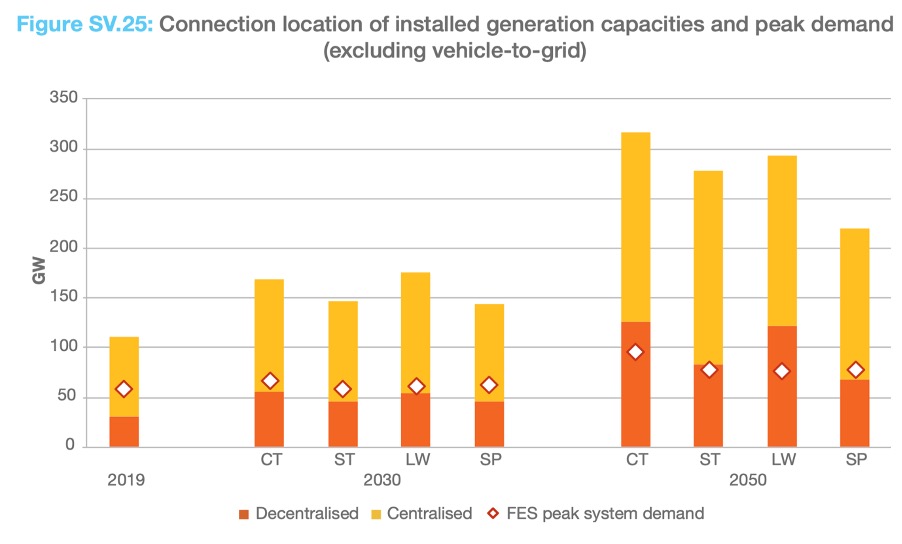Don’t Get Left Behind as National Grid Forecasts Dramatic Changes to UK Electricity
The National Grid’s Future Energy Scenarios starkly demonstrate the radical structural changes that are urgently required if the UK is to achieve its net-zero emissions target by 2050.
2050 is still some 30 years away but for this ambitious objective to be achieved, work will have to start immediately. Hartree Solutions is partnering up with businesses to make the changes required for these goals is to be met.
The next few decades will see huge growth in electrical demand with at least 40GW of new capacity needing to be connected to the electricity system in the next 10 years. Much of this extra capacity will come from renewable sources with at least 3GW of wind and 1.4GW of solar generation needing to be built every year from now until 2050. As a result, net emissions from the power sector are forecast to turn negative by 2033.

Such dramatic growth in renewable energy requires a change in the investment structure. Hartree Solutions is driving this change by fully financing local and onsite generation for businesses, including solar and wind. The National Grid’s report notes that zero marginal cost generation will provide up to 71% of generation capacity in 2030 and up to 80% in 2050.
The Industrial and Commercial sector is identified as one of the hardest to decarbonise, in particular steel, chemicals and cement production. The growth of data centres, which is predicted to be 70% by 2050, will require significant amounts of energy for cooling and running servers. These large energy users are precisely the types of business that Hartree Solutions has developed its offering for. The demand pattern of the business is analysed and the best energy solutions identified to lower energy costs and reduce carbon emissions. Any unavoidable emissions can then be offset via Hartree Solutions internationally recognized Verified Emission Reduction (VER) credits until a time when direct emission abatement is feasible.
Optimization is an essential element of the changing landscape of power generation in the UK with the National Grid scenario detailing that the concept of peak electricity demand and how it is applied in planning and operating the system is changing as the ability of demand to ramp up to take advantage of low prices increases. Hartree Solutions concept does exactly that with the output of the installed assets optimized via its artificial intelligence model to maximize output when electricity prices are at their highest and reducing it when grid demand and prices are lower.

The National Grid’s report outlines four different scenarios: Customer Transformation (CT); System Transformation (ST); Leading the Way (LW); and Steady Progression (SP). In all four of these scenarios, decentralisation is much higher than it is today, with up to 42% of generation capacity connected to distribution networks by 2050. Such a set up would see the transmission system adapt to transport electricity from one distribution network to another, rather than delivering from transmission connected generation to distribution networks. As Hartree Solutions rolls out its expanding number of onsite generation assets, these will play a key role in this updated vision on electricity distribution.
The future look of the U.K.’s network will see a big move away from large centralised power stations providing the bulk of generation in favour of more distributed energy, increasing the need for more small-scale balancing. This balancing act will open up more opportunities for those who can store or generate energy whenever they want. Hartree Solutions provides this flexibility, offering energy freedom for businesses with zero capital investment.
The National Grid Future Energy Scenarios 2020 can be downloaded here

Adam Lewis


